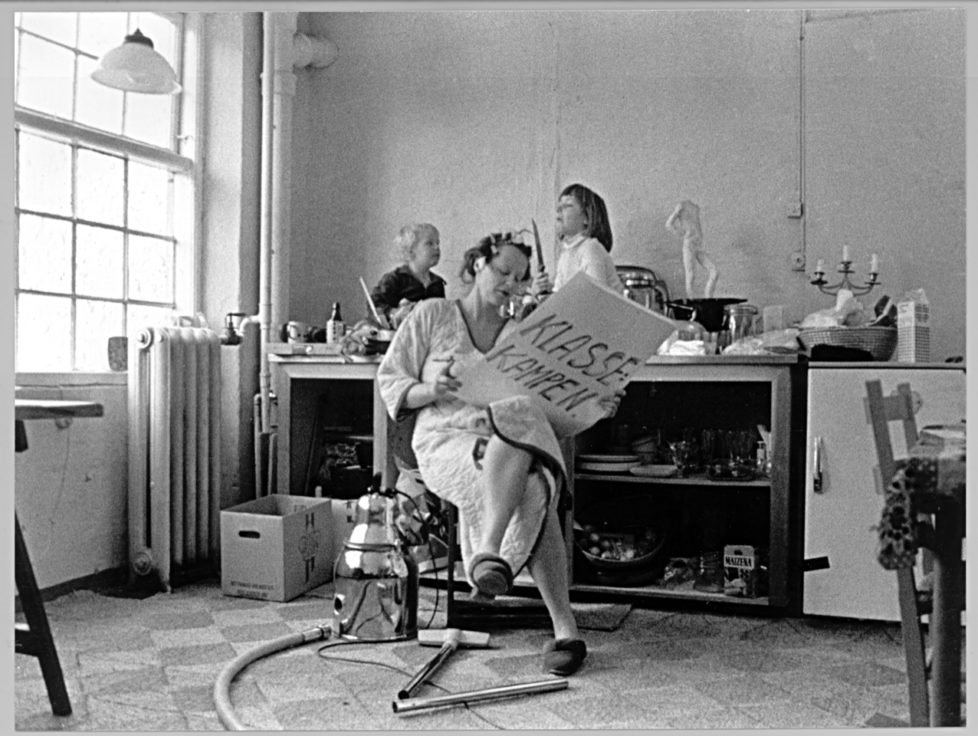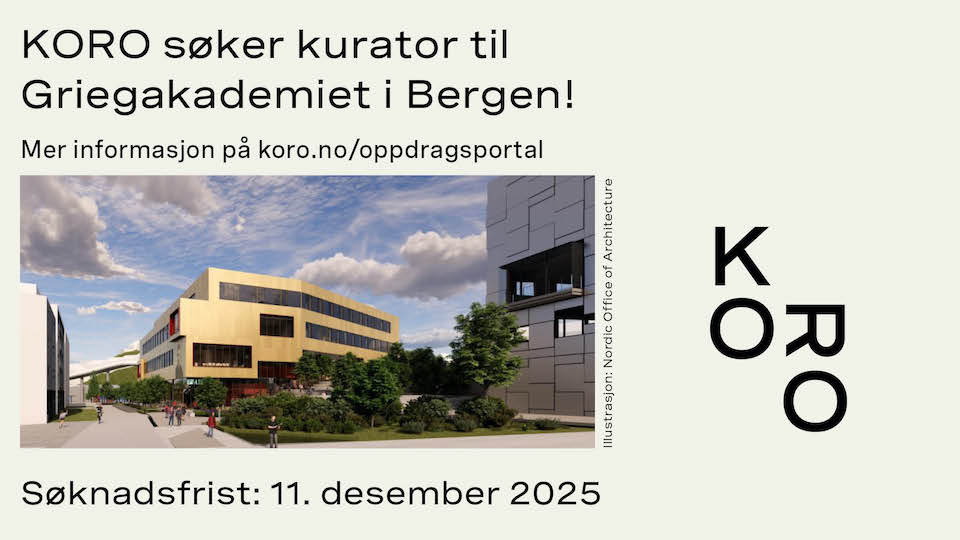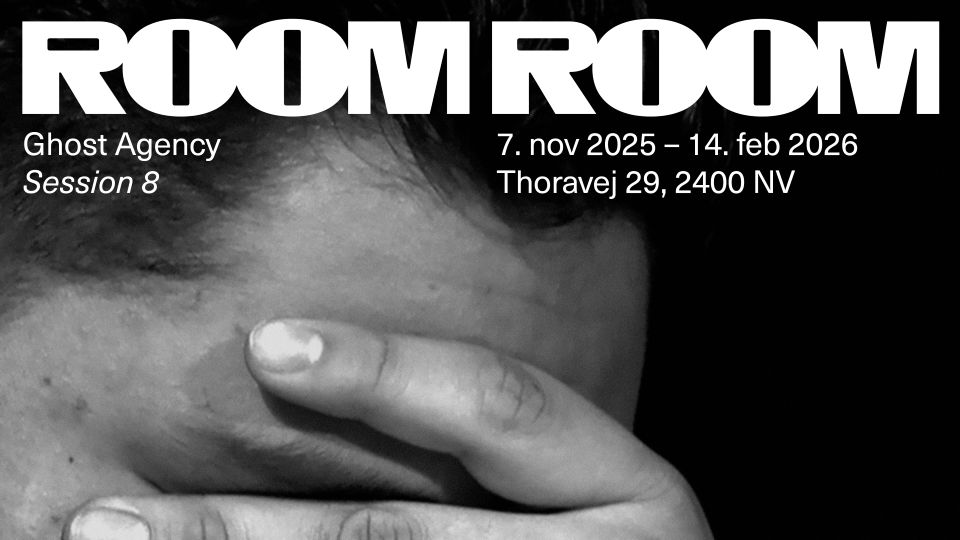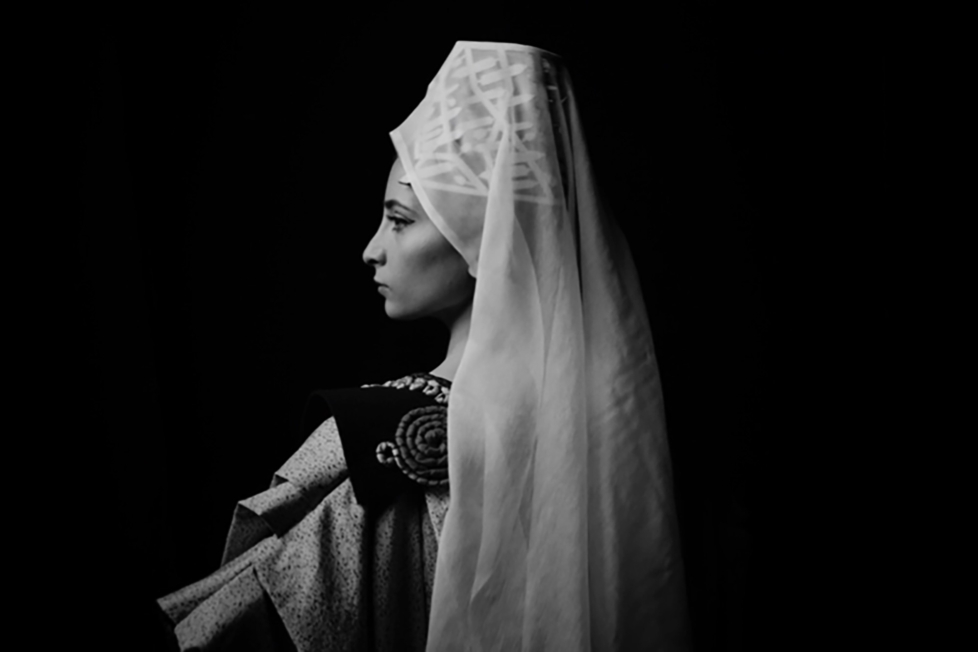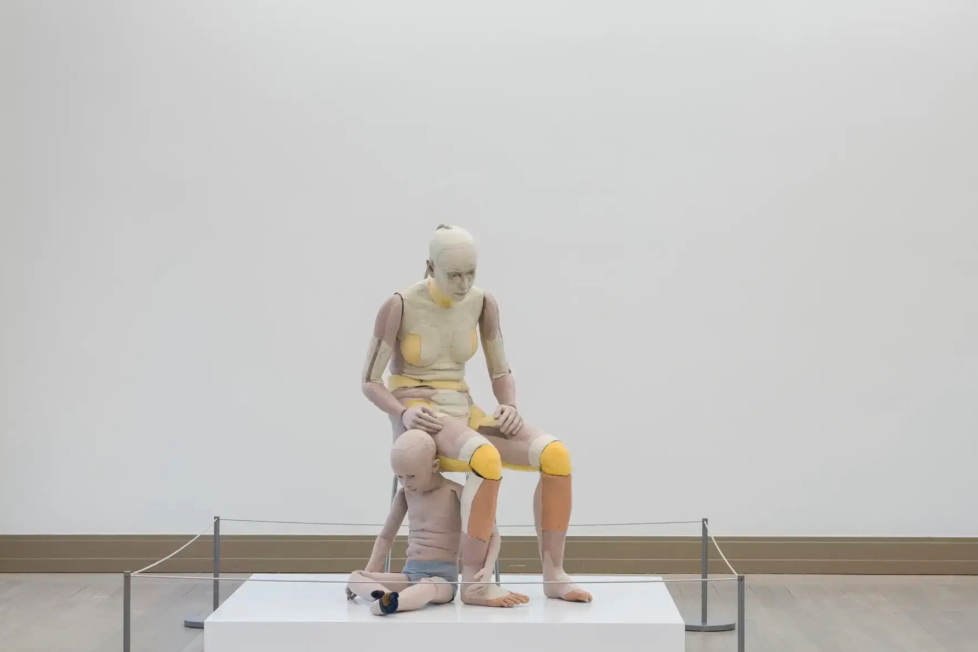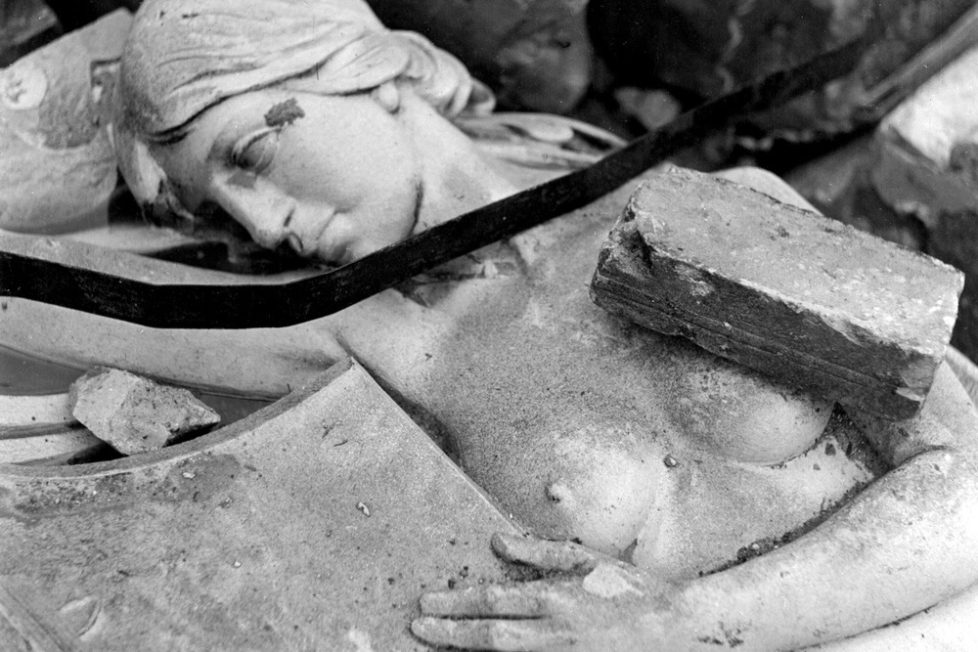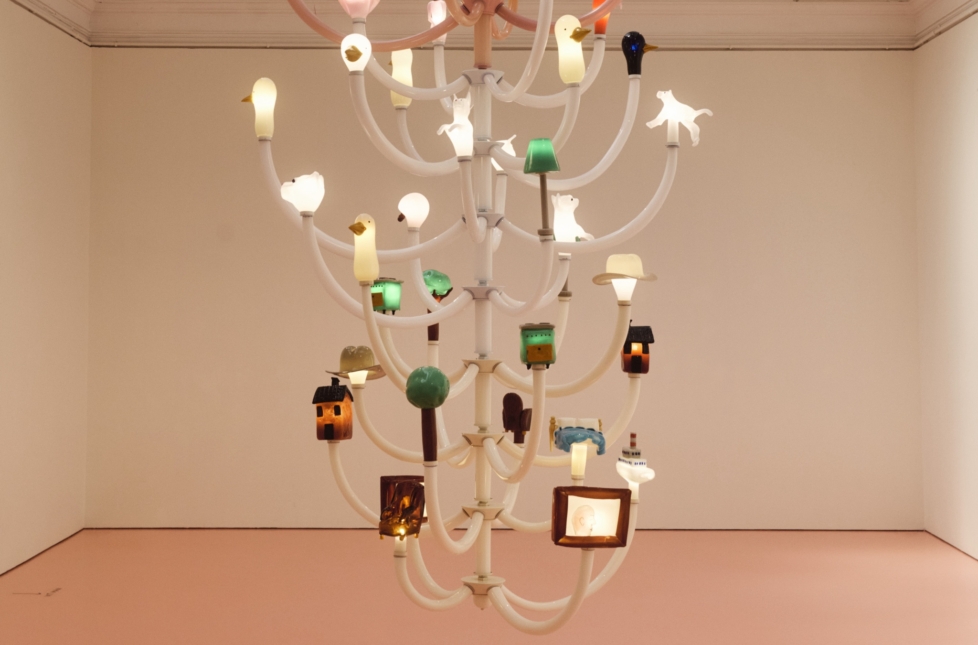
The newly opened Kirsten Justesen retrospective, which marks the occasion of the artist’s 80th birthday, is not being advertised with great fanfare at Kunsten. At the entrance to the museum are four banners, three of which advertise other exhibitions, while the fourth proclaims that admission to the museum is free if you also visit the brasserie. Even so, the official opening of Pussy Power has been a red-letter day in my diary for a long time. Works by Justesen and fellow women artists of the same generation, such as Jytte Rex and the slightly younger Elisabeth Toubro, have played a great part in shaping my outlook so that I now have an eye for small details such as the banner representation outside the museum. A small but clear sign of how women artists are presented.
“Consciousness is the content of women’s art,” writes Justesen in the short text Fra en husmornovelle (1977). The statement aptly sums up Justesen’s oeuvre, which spans six decades, pointing to her constant work with the body, gender semiotics, and women’s conditions – the latter in practical as well as political terms. The effort to create a deeper and more inclusive art is a long-lasting endeavour dating back further than Justesen, and it will continue to forge ahead, shoulder by shoulder with her – and because of her. During her time at the art academy in Copenhagen, she and fellow student Rikke Diemer set up an actual kindergarten at the academy so that young students would have someone to mind their children. In the same spirit, Justesen launched Redningsplanken on the occasion of her 75th birthday: a foundation whose purpose is to cover childcare costs for parents studying sculpture at the same academy.

The exhibition Pussy Power comprises around fifty works and documentation of works dating from the beginning of Justesen’s career in the 1960s until 2018. It is presented in six medium-sized, hessian-walled booths along a corridor at the southwest end of the museum. I was surprised to find the exhibition here, at a remove from the large airy halls on the ground floor. I had envisioned Kunsten setting aside a more significant part of the museum for the exhibition. Perhaps a slightly larger room or even the newer lower floor, where there would be more space to establish criss-crossing connections between the works. Doing so would create greater opportunities for activating the viewer’s body when encountering the works. After all, we are talking about one of Denmark’s most important living sculptors here.
Justesen’s practice has been groundbreaking in terms of redefining what sculptural and performative art can be said to be, and many younger generations have benefited from that breakthrough. Specifically, she paved the way for addressing the woman’s body from a female perspective: pregnancy, the showdown with the traditional role as housewife, motherhood. Take, for example, Justesen’s series Omstændigheder from the 1970s, which unfolds as kind of conceptual production that comprises casts of Justesen’s pregnant belly, various collage works, and photo series of Justesen while pregnant. One photograph shows her posing next to the cast of her first pregnant torso while expecting her second child. The repetition creates change at a pictorial level: the sculptural sensibility is massaged because identical actions never bring identical results. Two pregnancies, two different opportunities for working. Repetition also (laboriously) creates change at a political level: in this case, an insistence on speaking up about the living conditions for women. Justesen’s endeavours are important and merit attention because she has, using an approach that is both simple and complex, expanded the scope of the visual artistic language to include the female experience, as well as the conditions of women artists (and of women in general).

Those not well-versed in Justesen’s art might get the impression that she belongs to the radical femi-anarchist school which wants to do away with all patriarchal structures and does not relate at all to classic artistic values such as form, material, and scale. However, Justesen bases her work on a classical and modernist mindset. In addition to her interest in repetition and difference, the plinth is also a pervasive theme, once again with a female, political point of departure. It appears in very early works such as Den sidste model (1968), a series of small plaster sculptures depicting a woman who, over the course of the series, disappears completely into the plinth. And in Sculpture II (1968), a cardboard box that has been painted white and fitted with a photo of a woman who appears to be crouched down inside. The plinth motif is also echoed in the large collage FLAGSANG Når jeg ser et rødt flag smælde er det for det meste fra køkkenvinduet # 2 (1975–77), where the house itself, the very idea of home is the cardboard box in which the artist is trapped, a claustrophobic working-class housewife pedestal. The question of what the plinth signifies, physically and philosophically, in relation to sculpture, the body, and gender is a theme flowing through Justesen’s entire oeuvre.
The works in the exhibition are presented in almost chronological order inside the very square booths. And although it is of course possible to forge mental connections between the different works while visiting booth after booth, I did not find the architecture conducive to the overall experience of the works. They seem almost to have been flung against the walls in a rather claustrophobic way. Instead of an installation oriented towards scale and movement, what we find here is a more documentary, almost poster-like presentation of too many (important) works in too little space. I do see how things might easily turn out this way, since many of Justesen’s works are performative and the exhibited material often involves photographic or filmic documentation of actions. I would have loved to have seen more actual sculptural works too, instead of just documentation. But even in her documentation Justesen possesses a strong visual, pictorial sensibility that deserves to be activated with greater spatial finesse. After all, the fact that the body contributes to shape our vision, in concrete and figurative terms alike, is a major point for Justesen. In Pussy Power, the combination of the exhibition architecture and the way the works are installed comes across as pacifying.

Pussy Power is important thanks to Justesen’s works, not their presentation. All in all, it seems as if Kunsten did a slapdash job here, even though I know that many of those involved truly understand and respect Justesen’s work. One of them is curator and art historian Anna Holm, who has written an excellent and insightful essay in the beautiful but also very modest catalogue. I think I have learned more about Justesen’s practice; things that I previously had difficulty articulating seem obvious now that I have read Holm’s presentation. One example concerns Justesen’s combination of snowy landscapes and lumps of ice with body and text.
However, I was mildly surprised by a point made towards the end of the essay, where Holm writes that neither she nor Justesen see a sexualised woman in the artist’s oeuvre: while the works take their point of departure in the female body, they never do so in a sexual way. Reading these words, I go on to peruse my newly purchased copy of Justesen’s book Kors drag (1999), a collection of two hundred photographic notes. The first spread shows two black-and-white photographs arranged vertically, one above the other. The top photograph was taken looking down on the space between what appears to be a bent arm held upfront the body and the stomach. The arm forms a vault, as if the photographer stood in a cave looking out at the stomach; a bodily landscape comprising the upper part of the thighs and pelvis is marked out by dark pubic hair on the horizon. The bottom photograph zooms in on a glass dessert bowl with a spoon or fork resting inside. The bowl has been emptied, leaving only sticky residue on the inside. Next to the images are the words: “Times, patterns, bodies / become visible by touch.” If landscape-like genitalia and a reference to consuming something (I imagine) sweet and sugary isn’t highly erotic, then what is? This is just one of several spreads in the book that have undeniably clear references to the erotic – or just desire in general.
Also, isn’t the pregnant body also always (leaving aside rape resulting in pregnancy) at least indirectly a sign of female desire and a wish for sex? The patriarchy will, of course, always prefer to speak about pregnancy in terms of virginal passivity. But is that really the case?

A final, but not exhaustive, example is the photographic work Rødgrød med fløde (1978). The photograph shows two feet in a bathtub with a drain and a hand-held shower head spraying between the legs of the owner of the feet, who appears to be sitting in the bathtub. At first glance, the title (the name of a traditional Danish dessert as well as a well-known tongue twister for non-native speakers of Danish) makes the image difficult to decode, difficult to talk about. It’s almost like having a gobstopper put in your mouth. Is it a simple bathing scene? An abortion scene? Or is it, as I believe, actually a masturbation scene?
Justesen and Holm are, of course, entirely at liberty to assert that a sexualised reading of such works is wrong, misguided, a mirage, and that such an approach does not interest them at all. But I think it would be a mistake to completely reject any signs of interest in sex and the sexualised woman in the artist’s work. Because if you try to hide the female desire in Justesen’s art, which to my eyes is very clear, then the philosophical dimension of her work becomes, in a sense, oppressive. Of course, I have not forgotten the patriarchy’s ceaseless sexualisation of women, from which Justesen wishes to free herself. But that makes it all the more important to reclaim female desire, taking it back into the female domain, regardless of who we imagine the viewer to be. “Consciousness is the content of women’s art.” Let that apply to the world of sexuality, too. The exhibition is called Pussy Power, after all.


